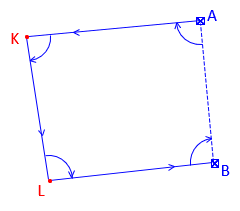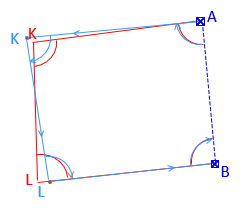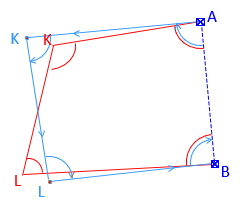5. Chapter Summary
A major advantage of LS is the ability to integrate differing quality measurements in an adjustment. Measurements can be apportioned their representative effect on results as long as appropriate weighting is used.
Think of a survey network as a structure, Figure E-6, and weights as stiffness or deformation resistance.
 |
| Figure E-6 2D Survey Network |
Higher weights add rigidity lowering standard deviations causing points to move less, Figure E-7(a). Lower weights relax the network causing standard deviations to increase allowing points to move more, Figure E-7(b).
 |
 |
| (a) Higher Weights | (b) Lower Weights |
| Figure E-7 Weight Effects |
|
On the other hand, weights that are too high assume minimum measurement errors and allow least point movement. This can provide a false sense of security.
Weights can have a significant impact on adjustment results. While not discussed here, most software provide analysis tools to assist appropriate weight determination. Unit weighting may only be appropriate with direct measurements using the same equipment and personnel under consistent conditions. A network of mixed measurement types and quality should use appropriate weights.
Mixing measurement types, like distances and angles, also mixes dimensions and units; these must cancel correctly or the adjustment results may not make sense. Because distance and angle weights are inversely proportional to errors squared, their squared units are in the denominator of the weight matrix elements. This allows correct unit cancellations in the [CTWC] and [CTK] matrix products.
Accuracy of final positions should reflect the quality of the measurements used to create them.